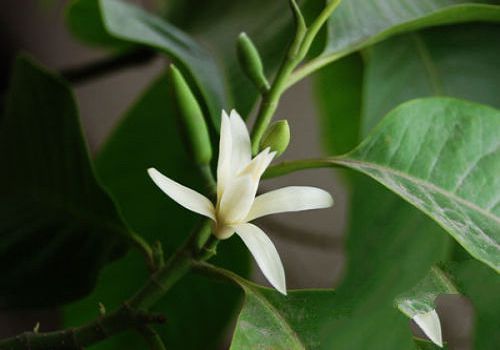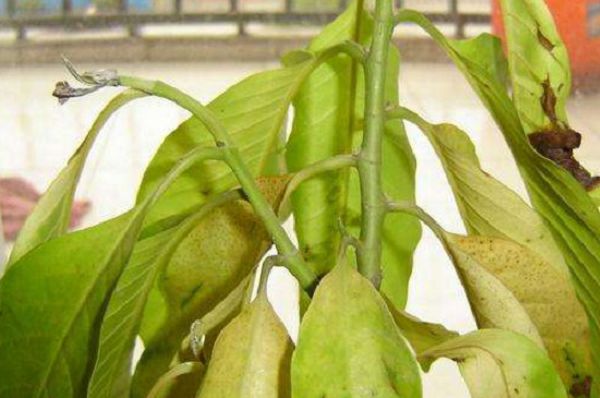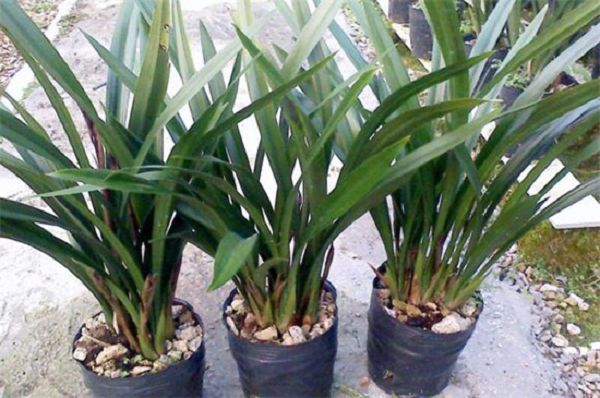Maintenance management and pruning methods of white orchids in four seasons

White orchid, also known as Magnolia, Magnolia, Magnolia and so on, is a plant of Michelia in Magnoliaceae. Evergreen trees, large leaves, long oval, green leaves, light green back, flowering from June to October, solitary in leaf axils, flowers white or yellowish, with strong fragrance. Native to the Himalayas and Malay Peninsula, it likes warm, hot, humid and sunny environment, and is not tolerant to shade. The suitable temperature for growth is 15-30 ℃.
The white orchid is pure and attractive. Flowers can be smoked to make scented tea. It can be arranged in a place with light. Because of the large plant shape, it is suitable to be arranged in the corner of the wall with light, or with other plants.
Maintenance and management of the four seasons
(1) Spring is suitable to be arranged on the balcony facing east, south and west. Change the pot after the temperature rises in spring (the young plants of white orchids change the pots once a year, and the molded plants change the pots every 2-3 years). It is best to use sandy soil rich in humus, fertile, loose and well drained. It is best to keep the inner soil of the root when changing the basin. The root of white orchid is fleshy root, which is neither dry nor wet, but also afraid of stagnant water. The soil cannot be short of water after new buds sprout. When the outdoor temperature is more than 15 ℃, the white orchid can be cultured out of the light outside the balcony to keep the potted soil moist and fertilize after the new leaves are born.
(2) it is suitable to be arranged on the balcony facing east, south and west in summer.
White orchids are resistant to high temperature and strong light. However, when the summer light is too strong, it is easy to make the leaves aging, and the basin soil is easy to dry and can not keep up with watering, so the white orchid should be moved to a place with morning and evening light or half-shade to cultivate, keep the basin soil moist and apply light fertilizer frequently. Sprinkle water around to increase air humidity and pay attention to ventilation at the same time. When the temperature is cool at the end of summer, the white orchid should be moved to a place with sufficient light to cultivate.
(3) it is suitable to be arranged on the balcony facing east, south and west in autumn. White orchids should ensure sufficient light in autumn, and water and fertilizer management should keep up. After October, the weather is cool, water supply can be gradually reduced and fertilization can be stopped. In order to enhance its cold resistance and reduce the occurrence of insect pests in autumn, white orchids should be allowed to exercise in outdoor low temperature for a period of time, but they should not be beaten by frost. People should be moved in time to cultivate in the balcony with light before frosting. The outdoor air temperature drops sharply, should move the person in the balcony in time.
(4) it is suitable to be arranged on the balcony facing east, south and west in winter. White orchid can not tolerate low temperature, and the winter temperature should be kept above 5 ℃. At this time, the white orchid is in a semi-dormant state, should ensure sufficient light, so that the basin soil is dry, pot soil is not dry, do not water, stop fertilization. In family cultivation, the temperature should be kept above 8 ℃. At this time to keep the basin soil moist and sufficient light, do not apply fertilizer. The balcony environment that is not ventilated in winter is easy to give birth to beetles, so we should pay attention to proper ventilation.
Pruning
The white orchid sends out new branches and leaves three times a year. The first leaf emergence was from early to mid-April, the second leaf emergence was from mid-late June to early July, and the third leaf emergence was in mid-late August. Because white orchids have flower buds only in the axils of new branches and leaves, they blossom only when new branches and leaves grow. The proper removal of some old leaves in the growing season is beneficial to the growth and germination of new branches and leaves as well as to more flowering. After reproduction and survival, the white orchid should be peeled for 1 or 2 times to make it branched, which is beneficial to the dwarfing and shaping of potted plants.
Related
- Is the orchid suitable for indoor use? Is it good for the body?
- How to prevent the empty root of orchids?
- What to do after the crab claw orchid is withered?
- Why are the leaves of orchids always yellow? Fertilizing and watering.
- Can the root of the gentleman orchid be saved if it is rotten?
- Diagnosis and treatment of cotton-blowing beetle insects in Cymbidium
- There is a way for a gentleman's orchid to rot.
- What is the most suitable temperature and humidity for the orchid?
- How to raise a gentleman's orchid? Cultivation techniques of Cymbidium
- How to prepare the nutritive soil for the cultivation of Cymbidium



